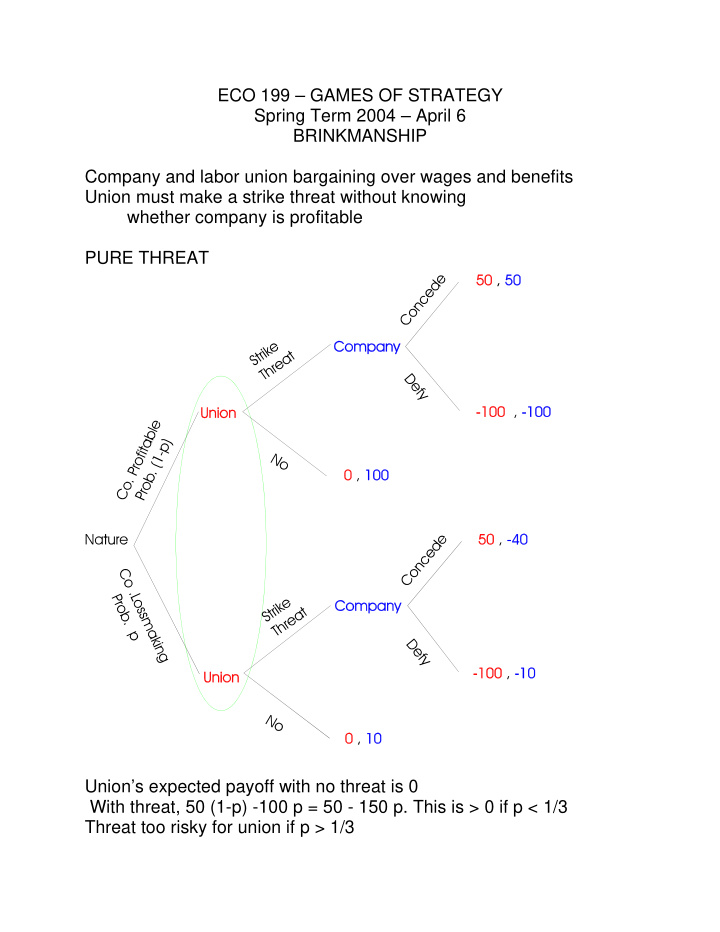



ECO 199 – GAMES OF STRATEGY Spring Term 2004 – April 6 BRINKMANSHIP Company and labor union bargaining over wages and benefits Union must make a strike threat without knowing whether company is profitable PURE THREAT Union’s expected payoff with no threat is 0 With threat, 50 (1-p) -100 p = 50 - 150 p. This is > 0 if p < 1/3 Threat too risky for union if p > 1/3
BRINKMANSHIP Probability(Actual strike if Company defies union) = q Union chooses q in advance; then actual action outside its control Effectiveness condition - Profitable company concedes if 50 > - 100 q + 100 (1-q) 200 q > 50, q > 1/4 Acceptability condition - Union’s expected payoff 50 (1-p) + [ -100 q + 0 (1-q) ] p > 0 q < 0.5 (1-p) / p
If p < 1/3, any choice 1/4 < q # 1 is effective and acceptable - pure threat OK If 1/3 < p < 2/3, need 1/4 < q < point on thick curve - need probabilistic threat (brinkmanship) If p > 2/3, even brinkmanship is too risky In practice, don’t know the precise value of p don’t know precise limits of q can’t control q very precisely So start safe (very low q) and escalate gradually until other side complies, or you find risk intolerable or bad outcome happens while each waits for other to concede
BRINKMANSHIP SUMMARY 1. I set up randomization device with stated probability Threat – If you defy, bad outcome will occur with this probability I don’t have control over actual action at that point 2. Paradoxically, internal dissension within your “team” helps in achieving this loss of control But need to control the degree of risk, and “controlled loss of control” hard to achieve in practice 3. Actual outcome is left to chance; disaster can happen Hence should start safe and raise risk gradually Actual game has asymmetric information – each player is exploring the other’s risk-tolerance 4. Implied promise (safety on compliance) must be credible 5. Schelling – The brink in brinkmanship is NOT a sharply defined cliff from which I threaten deliberately to jump, taking you with me. It is a slippery slope getting gradually steeper. I carry you gradually down it. Risk of both slipping increases. Up to you to comply; then we can both pull back to safety. It is dynamic or real-time version of Chicken Question is not whether to swerve, but when Increasing risk of crash if you leave it too late 6. In real-life confrontations, most threats have risk of error Therefore element of brinkmanship in all threats
Recommend
More recommend